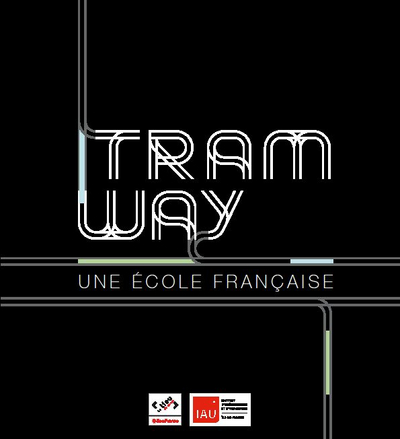The French Tram School
At its peak in 1925, trams were the main means of passenger transport in France and the network comprised 1,100 km of track for the Paris region alone. With the spread of the motorcar, the networks were dismantled in Paris from 1925 to 1937, and until 1966 in Valenciennes. Only three isolated lines remained in Lille-Roubaix-Tourcoing, Saint-Etienne and Marseille.
The inauguration of the first modern tram line in Nantes in 1985
The 1973 oil crisis marked a change of direction. In 1975, at the instigation of Marcel Cavaillé, Secretary of State for Transport, a call for projects revived the "light metro" in France, but it was not until the inauguration 1985 of the first modern tram line in Nantes that the reconquest began in earnest. After Nantes there was Grenoble, Paris (Seine-Saint-Denis), Rouen and above all Strasbourg in 1994, which dazzled with a futuristic vehicle, turfed tracks in urban areas and the quality of the urban planning. From then on tramways spread by contagion from city to city, growing exponentially. in the space of thirty years, nearly thirty French conurbations have adopted trams.
IAU île-de-France has supported since the 1970s urban planning models that are now called sustainable
IAU île-de-France has very quickly adopted an urban planning approach that involved adapting mobility’s technical requirements to the realities of urban structures. A pioneer in the field of environment it can but observe the results with satisfaction and rejoice having backed up, since the 1970s, urban planning models that are new called sustainable. This reality is more relevant than ever in Ile-de-France. Just as the New Grand Paris transportation network is being launched, as the Grand Paris Metropolis is being sketched and as the “Ile-de-France 2030” project is stepping into an operational phase, a holistic approach, integrating urban planning, transportation, air quality, energy and health, is very important. The “French Tram”, an in a wider sense, the urban planning transportation couple, still have great days lying ahead.
“The French Tram School” exhibition on display at Lieu du Design from 4 April to 12 July 2014
Behind the interpretation of its manifold visible achievements, Lieu du design has focused on the reasons for this success: why so much urban ambition? Who are the prime movers behind this urban miracle? Why such a success? It is the fruit of a remarkable union between excellence in the creative and technical trades, combined with the expertise of land transport industrialists and public transport operators. It is also the product of a clearly asserted political will. Everyone agrees that the tram should be a tool both for local democracy and for modernizing the city. Lieu du Design has wanted to pay tribute to the decision-makers, designers and constructors of the tram, who have made urban design a tremendous transformation tool enabling French economic agents to successfully tackle the global market, legitimized by 30 years' experience and the quality of nearly 30 completed networks.
This study is linked to the following theme :
Mobility
